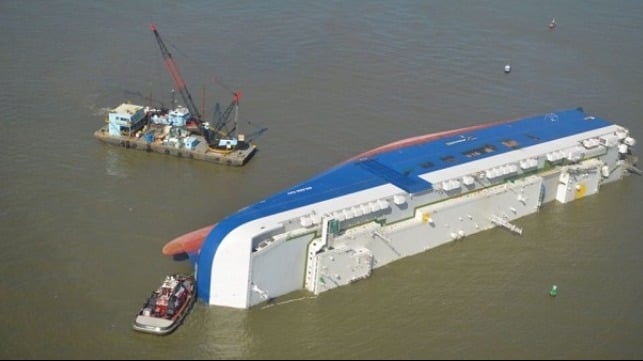Interesting Strategy When Your Vessel Is Being Boarded by Law Enforcement Personnel
Claiborne,
I tried this and it worked.
Took about fifteen minutes of discussion, but the officer, after making three phone calls, said he was not authorized to sign any document. He wished me a “good day” and left.
Captain Robert Lucas
S/V Aquitaine
Bradenton, FL
VESSEL BOARDING AGREEMENT
The Fourth Amendment (Amendment IV) to the United States Constitution is the part of the Bill of Rights which guards against unreasonable searches and seizures, along with requiring any warrant to be judicially sanctioned and supported by probable cause, “The right of the people to be secure in their person, houses, papers, and effects, against unreasonable searches and seizures shall not be violated….”
Search and arrest should be limited in scope according to specific information supplied to the issuing court, usually by a law enforcement officer, who has sworn by it.
In Mapp v. Ohio, 367 U.S. 643 (1961), the Supreme Court ruled that the Fourth Amendment applies to the states by way of the Due Process Clause of the Fourteenth Amendment.
In Katz v. United States, 389 U.S. 347 (1967), the Supreme Court ruled that the amendment’s protections apply only when the searched party has a “reasonable expectation of privacy”.
The Supreme Court has also ruled that certain searches and seizures violated the Fourth Amendment even when a warrant was properly granted.
Oath of Boarding Officer:
I ______________________________, acting as an officer of _________________________
assert that I have probable cause to board the vessel _________________________________ for the following reasons:
___________________________________________________________________________
___________________________________________________________________________
___________________________________________________________________________
I accept responsibly, under law, that this boarding is necessary and does not violate the protections of the fourth amendment to the constitution of the United States of America and the statutes of the state of _______________________.
I waive all legal rights to defense of this boarding that the Captain of this vessel may raise under law.
_________________________________________, Boarding Officer
As agent of ________________________________
Boarding is:
Granted _______ , ________________________________ , Captain , Date :_______________
Denied ________ , ________________________________, Captain, Date: _______________
Fourth Amendment -Vessel Boarding Agreement
BRAVO! and bravo again! I always wondered just which bureaucrat or politician gave up our Fourth Amendment rights regarding unreasonable search. My guess is that printers are humming already (if you’ve got one aboard). I hope we can find some more results of this tactic!
Capt Mike
S/V Blue Skye
Captain Lucas:
In checking the regs, I found:
Coast Guard may go aboard any United States vessel at any time, anywhere to conduct a documentation and safety inspection.
A search of a U.S. vessel beyond this type of inspection is subject to limitations under the United States Constitution. If a search extends beyond this narrowly defined scope, a court may be asked to evaluate the legality of the search by balancing the individual’s right to privacy in the specific circumstances of the search against society’s interest in detecting criminal conduct.
Captain Whitney
I printed it. We’ll see!
Kevin R. Quinn
Certain officials have standing search warrants. The Coast Guard does indeed have a standing warrant for the purpose of determining the seaworthiness of a vessesl for the intended purpose(voyage). A fire fighting offical has a standing warrant to enter a building for the purpose of fighting a fiire and for rescue purposes. Why would we need to ask any official to sign anything? Just ask them for the warrant that they have!! If it is a standing warrant, they must still provide proof. If they do not have a court approved warrant, deny the boarding!
Thomas P. Sangston













Comments from Cruisers (3)
Transited St Andrews Sound yesterday March 16. NE wind 20 to 25 knots. I followed the ICW route, it became terribly rough. Steep four to six foot waves with a period of 2 to 3 seconds. In a 31 foot sailboat it was nerve wracking. So of course today I see the alternate route. Lesson learned, check Cruisers Net and Bob 423.
I believe the correct link for Bob423 tracks and routes is at: http://bobicw.blogspot.com/
You meant fleetwing.blogpot.com